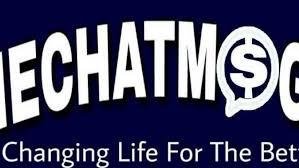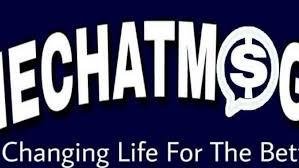The painting brush is one of the most fundamental tools in the world of art, serving as a bridge between the artist's vision and the canvas. Its evolution reflects not only advancements in artistic techniques but also the changing needs of educators and young artists. This exploration delves into the history of the painting brush, its significance in art education, and how it continues to inspire creativity among children.
Historical Overview of the Painting Brush
The painting brush has a rich history that dates back thousands of years. Its development is closely linked to the evolution of painting techniques and artistic expression across various cultures.
-
Ancient Origins: The earliest brushes were likely made from twigs or animal hair, used by prehistoric artists to apply natural pigments to cave walls. These primitive tools allowed early humans to create images that conveyed stories, rituals, and important events. As societies evolved, so did the materials used for brushes.
-
Chinese Calligraphy and Painting: In ancient China, the brush became an essential tool for both calligraphy and painting. The traditional Chinese brush, made from animal hair and bamboo, is known for its versatility and ability to create a range of strokes. This brush style has influenced not only Chinese painting but also the global appreciation for the art of brushwork.
-
Renaissance Innovations: The Renaissance period marked a significant transformation in the use of brushes. Artists like Leonardo da Vinci and Michelangelo experimented with different brush shapes and sizes, allowing for greater detail and expression in their works. The introduction of synthetic brushes and various bristle types further expanded the possibilities for painters.
-
Modern Developments: In contemporary times, the painting brush has undergone further innovations, including the use of synthetic materials and ergonomic designs. These advancements have made brushes more accessible and user-friendly, catering to artists of all skill levels.
The Role of Painting Brushes in Art Education
The painting brush is a vital tool in art education, particularly for children. It serves as an entry point for young artists to explore their creativity and develop their artistic skills.
-
Encouraging Self-Expression: Painting allows children to express their thoughts, emotions, and ideas visually. The painting brush becomes an extension of their creativity, enabling them to translate their inner visions onto paper or canvas. Through the act of painting, children learn to communicate in a way that transcends verbal language.
-
Developing Fine Motor Skills: Using a painting brush helps children refine their fine motor skills. The control required to manipulate the brush fosters hand-eye coordination and dexterity. As children practice painting, they gain confidence in their ability to create and express themselves.
-
Exploring Color and Composition: Painting with brushes introduces children to the concepts of color theory and composition. They learn how different colors interact, the importance of balance in their artwork, and how to create depth and perspective. This exploration can spark a lifelong interest in art and design.
-
Promoting Cognitive Development: Engaging in painting activities stimulates cognitive development in children. They learn to make decisions about color choices, brush techniques, and composition, all of which require critical thinking and problem-solving skills. Moreover, the creative process encourages innovation and imagination.
-
Fostering Emotional Well-Being: Art has therapeutic qualities that can benefit children's emotional health. Painting with a brush allows children to express feelings that they may not yet have the words for. This form of expression can be particularly valuable for children dealing with stress or anxiety, providing them with a healthy outlet for their emotions.
The Evolution of Painting Brushes for Kids
As the understanding of child development and educational methodologies has evolved, so too have the painting brushes designed specifically for young artists. These brushes cater to the unique needs of children, enhancing their painting experience and encouraging creativity.
-
Size and Grip: Brushes designed for children often feature shorter handles and larger grips, making them easier to hold and manipulate. This ergonomic design is crucial for young artists who are still developing their fine motor skills. A comfortable grip allows children to focus on their creativity rather than struggling with the tool.
-
Variety of Shapes and Sizes: Modern painting brushes come in a variety of shapes and sizes, allowing children to explore different techniques and styles. Flat brushes for bold strokes, round brushes for detail work, and fan brushes for texture provide a wide range of possibilities. This variety encourages experimentation and helps children discover their artistic preferences.
-
Non-Toxic Materials: Safety is a top priority when it comes to art supplies for children. Many manufacturers now produce brushes made from non-toxic, child-safe materials. This ensures that young artists can explore their creativity without the risk of harmful substances.
-
Engaging Designs: Many painting brushes for kids feature bright colors and fun designs that appeal to young artists. These engaging aesthetics can inspire excitement and enthusiasm for creating art, making the painting experience more enjoyable.
-
Educational Kits: Some brands offer painting brush sets as part of educational kits that include paint, canvases, and instructions. These kits are designed to guide children through the artistic process, providing them with the tools they need to create their masterpieces while fostering a love for art.
Cultural Significance of Painting Brushes
The painting brush holds cultural significance beyond its functional role in art. It is a symbol of creativity, self-expression, and the human experience.
-
Cultural Traditions: In many cultures, the act of painting with a brush is steeped in tradition. For example, Chinese calligraphy and ink painting have deep cultural roots, reflecting the values and philosophies of Chinese civilization. The brush is not just a tool; it represents a connection to heritage and identity.
-
Art as a Universal Language: The ability to create art transcends linguistic and cultural barriers. Painting with a brush allows individuals to communicate their thoughts and feelings in a universal language. This aspect of art fosters understanding and connection among diverse communities.
-
Inspiration for Future Generations: The legacy of the painting brush continues to inspire future generations of artists. As children learn to use this tool, they carry forward the traditions of creativity and expression that have defined human culture for centuries. By nurturing young artists, we ensure that the spirit of art remains vibrant and alive.
Promoting Creativity Through Painting Brushes
To cultivate a love for art in children, it is essential to provide them with the right tools and opportunities for creative exploration. Painting brushes play a pivotal role in this process.
-
Encouraging Exploration: Parents and educators can foster creativity by encouraging children to experiment with different brush techniques and styles. Providing a variety of brushes allows children to discover their unique artistic voice.
-
Creating Art Together: Collaborative art projects can strengthen bonds between children and their caregivers. Painting together not only enhances the experience but also encourages children to express their ideas and emotions freely.
-
Art as Play: Viewing art as a form of play rather than a task can shift children's perspectives. When painting with brushes becomes a fun and enjoyable activity, children are more likely to engage wholeheartedly, leading to greater creativity and expression.
-
Celebrating Artistic Achievements: Displaying children's artwork fosters a sense of pride and accomplishment. Whether it’s hanging their paintings on the fridge or creating a mini-gallery at home, acknowledgment of their efforts encourages continued artistic exploration.
-
Integrating Art into Daily Life: Incorporating painting into everyday activities can enhance children's creativity. Setting aside time for painting or using brushes in projects beyond traditional art—such as decorating objects or crafting—can enrich their artistic experience.
Final Thoughts
The painting brush is more than just a tool; it embodies a history of artistic expression and creativity. Its evolution reflects the changing needs of artists and educators, particularly in nurturing the creative potential of children. As young artists explore the world of painting, the brush serves as a vital instrument in their journey of self-discovery and expression.
Through the act of painting, children not only develop essential skills but also connect with their emotions and the world around them. The legacy of the painting brush continues to inspire new generations, fostering a love for art that transcends cultural boundaries. By providing children with the right tools and encouragement, we can empower them to unleash their creativity and contribute to the vibrant tapestry of human expression.



